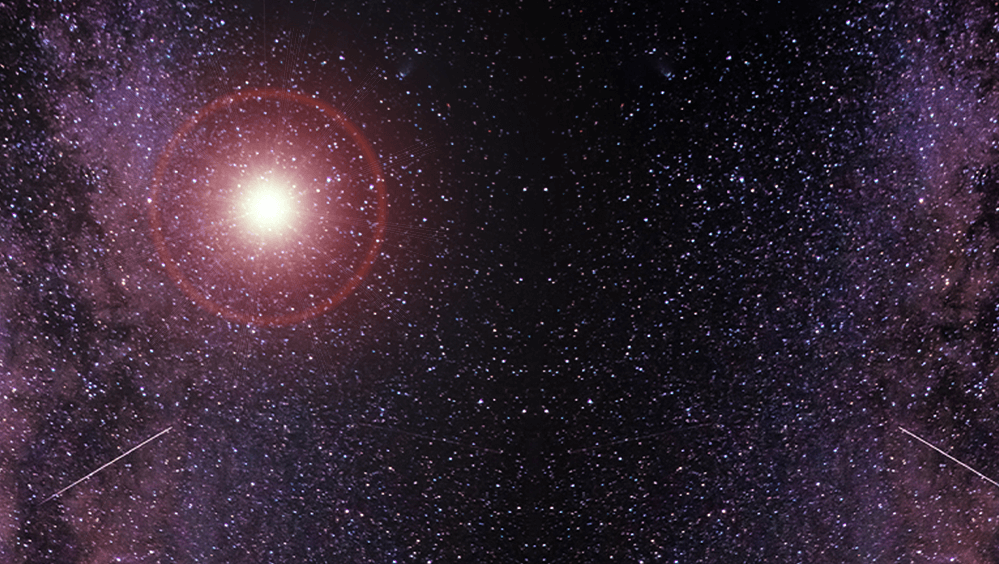
“Twinkle, twinkle little star, how I wonder what you are. For some, this may be just a childhood tune, one that gets kids thinking about the little twinkling diamonds in the sky. But many of us don’t outgrow this curiosity when we reach adulthood. It’s not uncommon to wonder, what is a star?
To understand this, we tend to look to the closest star to us: our sun. We know that stars can be different colors and are hot balls of burning gas. They give us heat and light, and provide the very essence of life here on earth. Without our sun, life as we know it couldn’t exist.
What you might not realize is that our sun isn’t a “typical” star. It’s actually a dwarf star, meaning it’s smaller and less intense compared to most of the stars in the universe.
So, what is a star? Here’s a closer look at stars and why they matter.
Fun Facts About Stars
To get an idea of what stars really are, let’s look at some fun facts about stars:
- Stars are giant balls of gas that form when particle clouds in space start to group together and spin. As they spin, they take on mass, which increases their heat.
- It takes millions of years for particle clouds to turn into stars.
- Stars are mostly made of hydrogen and helium.
- Particle are held together by their own gravity.
- The biggest stars exhaust their energy supply within a few million years.
- Smaller stars, called dwarf stars, use their energy more efficiently and can last for billions of years.
- Our sun is a dwarf star and is believed to be “middle aged.”
Read more in our article about fun facts about the stars.
What Does a Star Really Look Like?
In preschool, you were probably taught that a star is a five-point shape, almost as though someone smashed together some triangles. But real stars do not look like this, much like a heart-shaped Valentine’s box of chocolates doesn’t look like the heart inside your body.
Stars are actually ball-shaped, just like our sun. They’re almost perfect spheres, and you can’t really see with the naked eye any flaws. Like planets, stars come in many sizes and temperatures. Its size, however, isn’t always indicative of its temperature.
How Do Stars Form?

We’ve already touched on this a little bit, but for the sake of more detail, stars form when clouds of particles in space are pushed together and initiate a swirling motion.
In every galaxy, there are millions of stars. In between these stars are clouds of gas and dust. These clouds are like the incubators for new stars to form. The substances in these clouds move in all directions. Imagine a group of children running around on a school playground.
Sometimes, regions start to collect more space dust and molecules than others, so mass is unevenly distributed. If too much starts to collect in a single place, that region will start to collapse from the weight of its own gravity.
As the collapse occurs, the temperatures start to rise. This is true according to physics: the more matter you have in a space, the hotter that space becomes. It’s like comparing a room full of people to one that’s empty: the one full of people will be warmer.
The dense gas and particles start to form the core of what will eventually become the star. Over time, this core starts to contract, which increases the density of the matter. As the contractions continue, along with the constant motion of gas and dust in the region, the whole system starts to rotate.
Then, as the mass starts to heat up, it eventually gets hot enough to initiate a nuclear fusion reaction, which turns the mass into a bona fide star. This is the first point at which a star is visible.
Why are Stars Important?
To understand the role of stars in our universe, we need only look at our very own star, the sun. Without the sun, life on earth could not exist. The sun provides us with energy, including Vitamin D. It also gives our plants energy and life. Without plants, we wouldn’t have a food source. Plants also make the oxygen we breathe, so we also wouldn’t have an air source.
In addition, learning about the stars has allowed humans to navigate our journey through space. Stars help us learn about the universe around us. And since knowledge is power, we may be able to better understand our own existence simply by observing the heavenly bodies that we’ll never be able to visit.
The Perfect Star Gifts for Celestial Enthusiasts
If you have a star enthusiast in your life, order a star map gift. A personalized star map recreates the night sky on the date of your choosing. It’s a great way to commemorate a milestone event in someone’s life and show them how the universe came together for them on that day.







